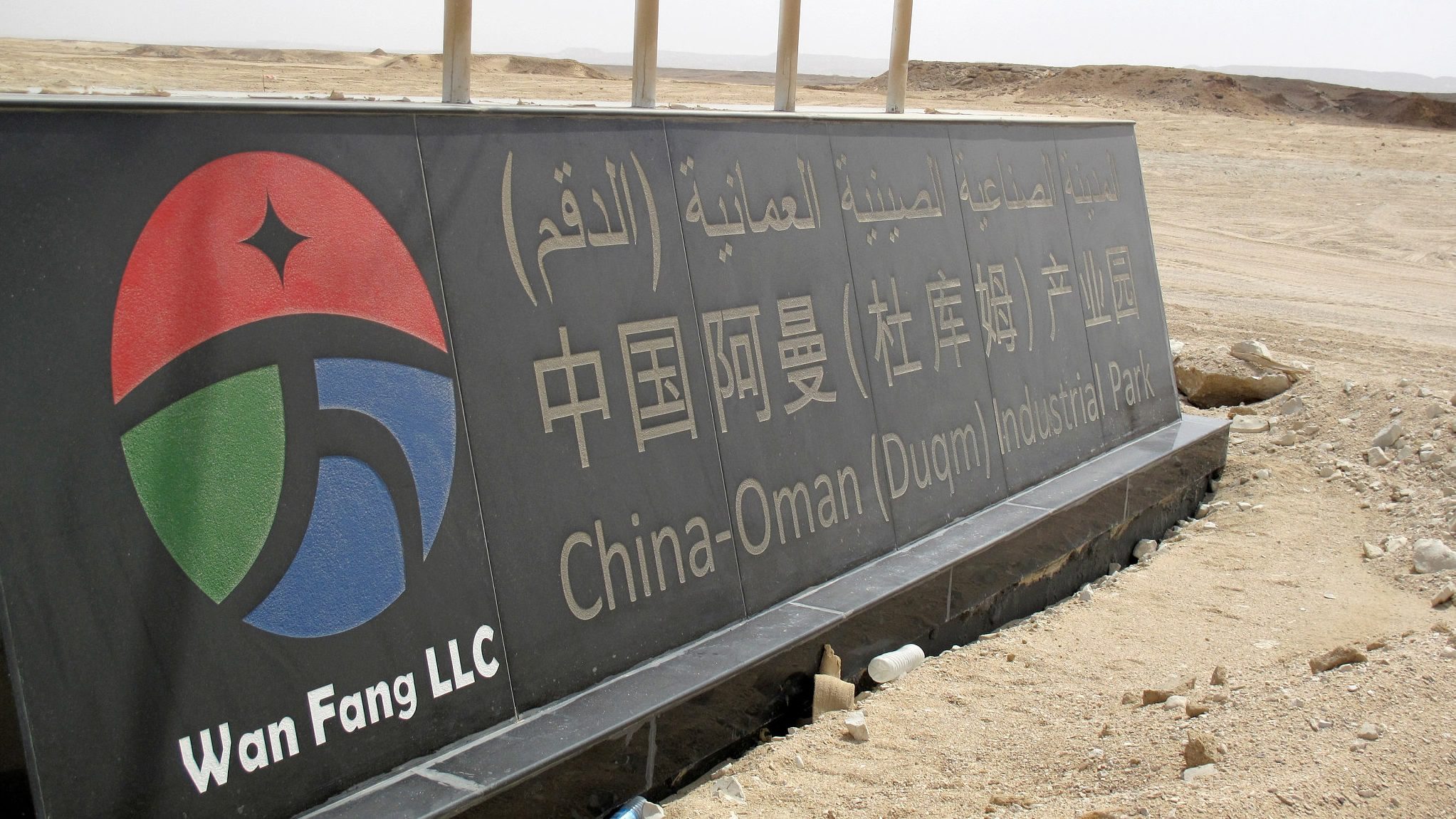
World
17:35, 27-Feb-2018
Analysis: Could China-funded Omani port go against Beijing’s interest?
By Abhishek G Bhaya

After India struck a deal with Oman for the Indian Navy to get access to the strategically located Duqm port during Prime Minister Narendra Modi’s visit to the Arab sultanate earlier this month, a section of the Indian media reported that the move is aimed at countering China’s increasing presence in the Indian Ocean and the Arabian Sea.
However, most of these reports ignored the fact that it is China that has been actively helping Oman in its effort to transform Duqm, a fishing village about 550 kilometers south of capital Muscat, into an industrial city which will complement the strategic port.
A closer look at the level of Chinese engagement in the project known as the China-Oman (Duqm) Industrial Park will make it abundantly clear that the Indian media’s insinuation about the Omani port somehow becoming a pivot against Chinese interests in the region is entirely unfounded.
Many investors from China are involved in developing the industrial park, which has been described as an exemplary project in China-Arab industrial cooperation in a report by China’s Xinhua news agency.
Chinese firms invest in Duqm

Two vessels undergo work at a massive drydock and ship repair facility in Oman's Duqm Special Economic Zone, on April 10, 2016. /VCG Photo
Two vessels undergo work at a massive drydock and ship repair facility in Oman's Duqm Special Economic Zone, on April 10, 2016. /VCG Photo
Oman Wanfang, a consortium of six private firms mostly from China’s northwestern Ningxia Hui Autonomous Region, was named by Special Economic Zone Authority at Duqm (Sezad) last April as the master developer of the venture covering 1,200 hectares in the coastal town.
The consortium is developing over 25 projects for the industrial park including a methanol plant, a power project and a five-star hotel with a combined investment of over 3 billion US dollars so far, according to Times of Oman newspaper.
Sezad CEO Lee Chee Khian told the Omani daily that the design work for the industrial park has already been completed. The project is envisioned to develop logistics center, commercial harbor and tourist site as part of Oman’s effort to diversify its economy beyond oil and gas exports.
Eventually, Chinese firms aim to invest up to 10.7 billion US dollars in the project, Oman Wanfang CEO Ali Shah told Reuters.
Last September the chairman of China-Oman Industrial Park, Yahya Jabri, attended an investment expo in Yinchuan in Ningxia Hui Autonomous Region, where he briefed Chinese investors on the Duqm project.

Stressing that beyond oil, Duqm enjoys “an advantageous location, a good deep-water port, and complete ship-repairing facility," Jabri underlined that the port city would eventually become a gateway to other Arab and North African region.
"Goods transported via Duqm will reach 22 million tonnes in the next decade… Oman welcomes more Chinese entrepreneurs to set up joint ventures or solely foreign-owned businesses,” he was quoted as saying by Xinhua in a report last September.
The report said investment agreements worth 3.8 billion US dollars were signed between companies of the two sides. "Total capital poured in will amount to 11 billion dollars in 10 years, and 12,000 jobs will be created for local people," the Omani official told Xinhua.
"With huge market potential and unique natural resources, Arab economies [such as Oman] are complementary to China," Xinhua quoted Chen Zhou, vice president of the China Council for the Promotion of International Trade, as saying. "The new cooperation not only allows China to give full play to its competitive industries but helps Arab countries improve infrastructure and build a more sophisticated economic structure."
China is also ready to encourage its companies to play an active part in the Chinese industrial park project inside Oman's Special Economic Zone of Duqm, he said, adding that Beijing would like to join Oman in expanding their cooperation in telecommunications, finance, investment, aerospace, petrochemical industries and renewable energies, according to Xinhua.
Oman, a key BRI partner

Visiting Chinese State Councilor Wang Yong (left) meets with Fahd bin Mahmoud al-Said, Oman's Deputy Prime Minister for the Council of Ministers, in Muscat, Oman, on May 23, 2016. /Xinhua Photo
Visiting Chinese State Councilor Wang Yong (left) meets with Fahd bin Mahmoud al-Said, Oman's Deputy Prime Minister for the Council of Ministers, in Muscat, Oman, on May 23, 2016. /Xinhua Photo
Duqm’s industrial park project assumes significance when seen as part of China’s Belt and Road Initiative (BRI). State Councilor Wang Yong during his visit to Muscat in May 2016 remarked that China considers Oman a key partner in materializing the BRI, Xinhua reported.
Wang said China would like to use its fine production capacity and advanced industrial technologies to help Oman in building up its infrastructures like high-speed railways, highways, airports and seaports.
The Indian media cited Duqm’s proximity to Gwadar port in Pakistan, which is being developed by China as part of the BRI; and also the Omani port’s closeness to Djibouti, where China has a naval base; may have driven India to seek access to the strategic port.
“The port will act as India’s entry point for wider Middle East and Eastern Africa, a welcome development at a time when China has deployed strategic assets in the Indian Ocean Region,” New Delhi-based The Economics Times said, citing unnamed experts.
Oman has given birthing rights to Indian Navy vessels at Duqm port. Similar facilities have been extended to the navies from the US and the UK as well.
Duqm is promoting its location as a major selling point and has the potential to develop into one of the region’s largest ports in the long run.
While admitting that Duqm isn’t like other major port cities in the region such as Jeddah (in Saudi Arabia) or Dubai (in the United Arab Emirates) yet, Oman Wanfang CEO Ali Shah remained upbeat about the potential of the Omani port city. “It’s still new, it needs time to develop. But we at Wanfang are thinking the future for Duqm will be better than those cities inside the Gulf,” he told Reuters.
[Cover Photo: The logo of the China-Oman (Duqm) Industrial Park is seen at the entrance of the site in Duqm, Oman, on August 22, 2017. /VCG Photo]
5984km

SITEMAP
Copyright © 2018 CGTN. Beijing ICP prepared NO.16065310-3
Copyright © 2018 CGTN. Beijing ICP prepared NO.16065310-3